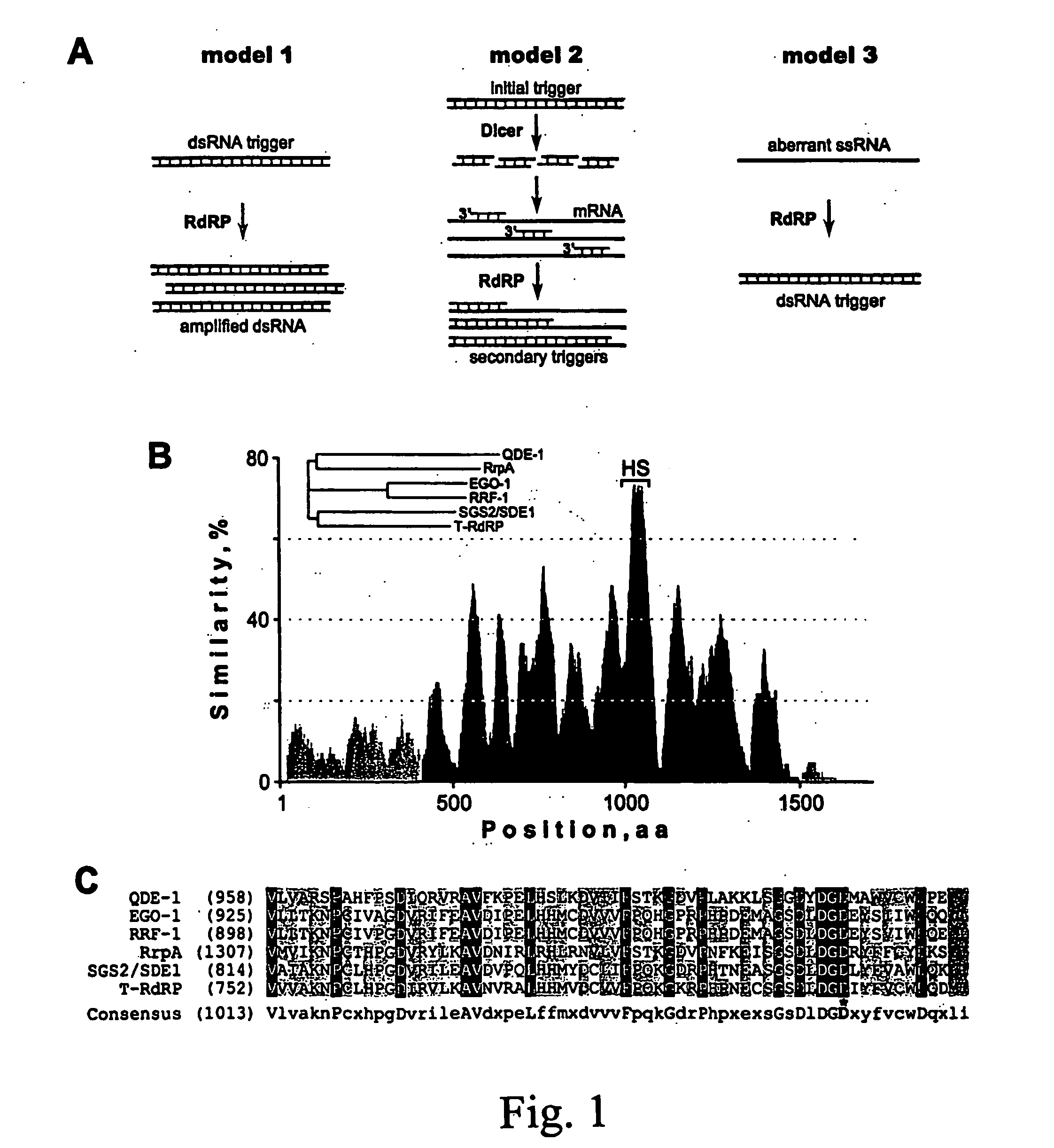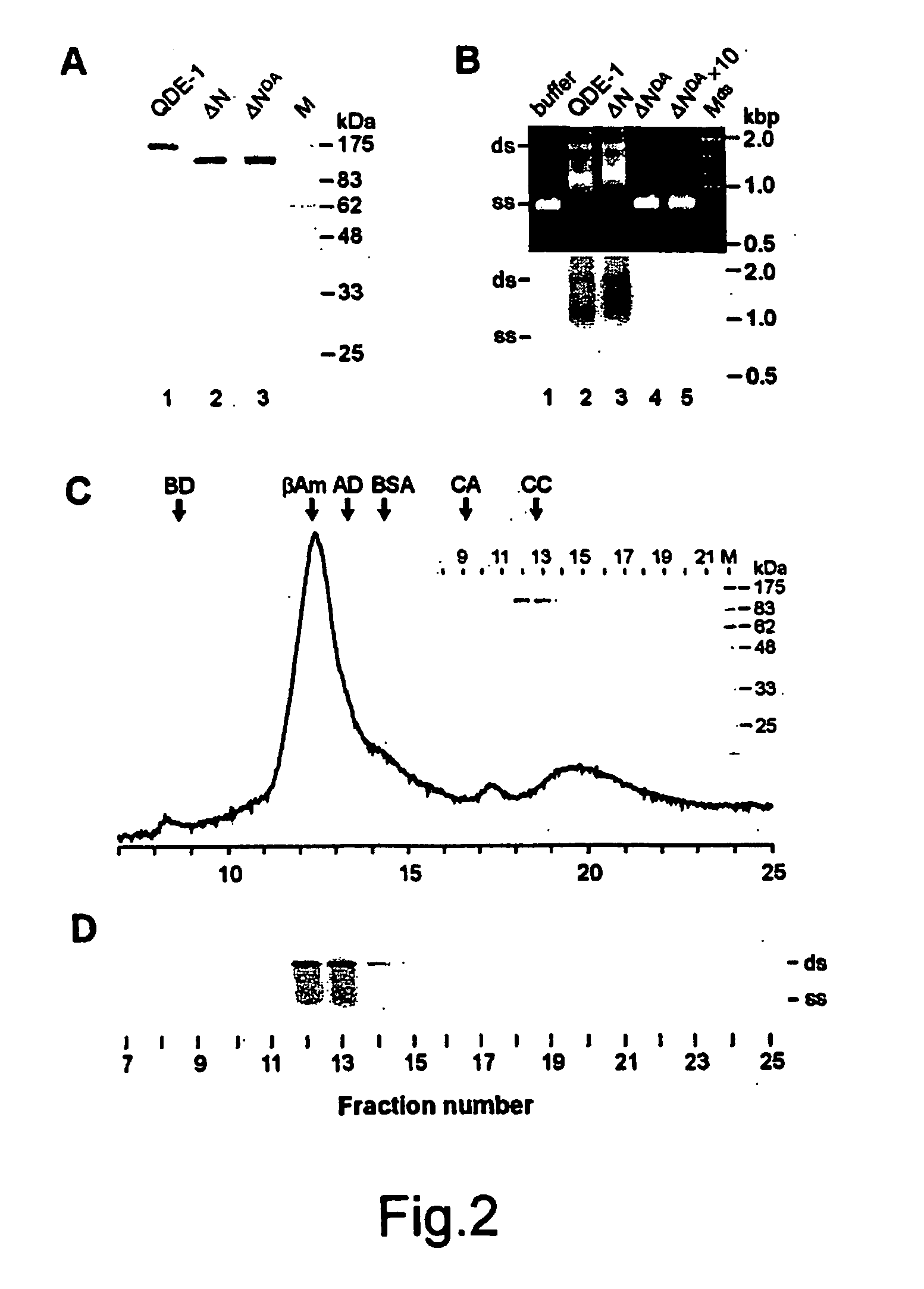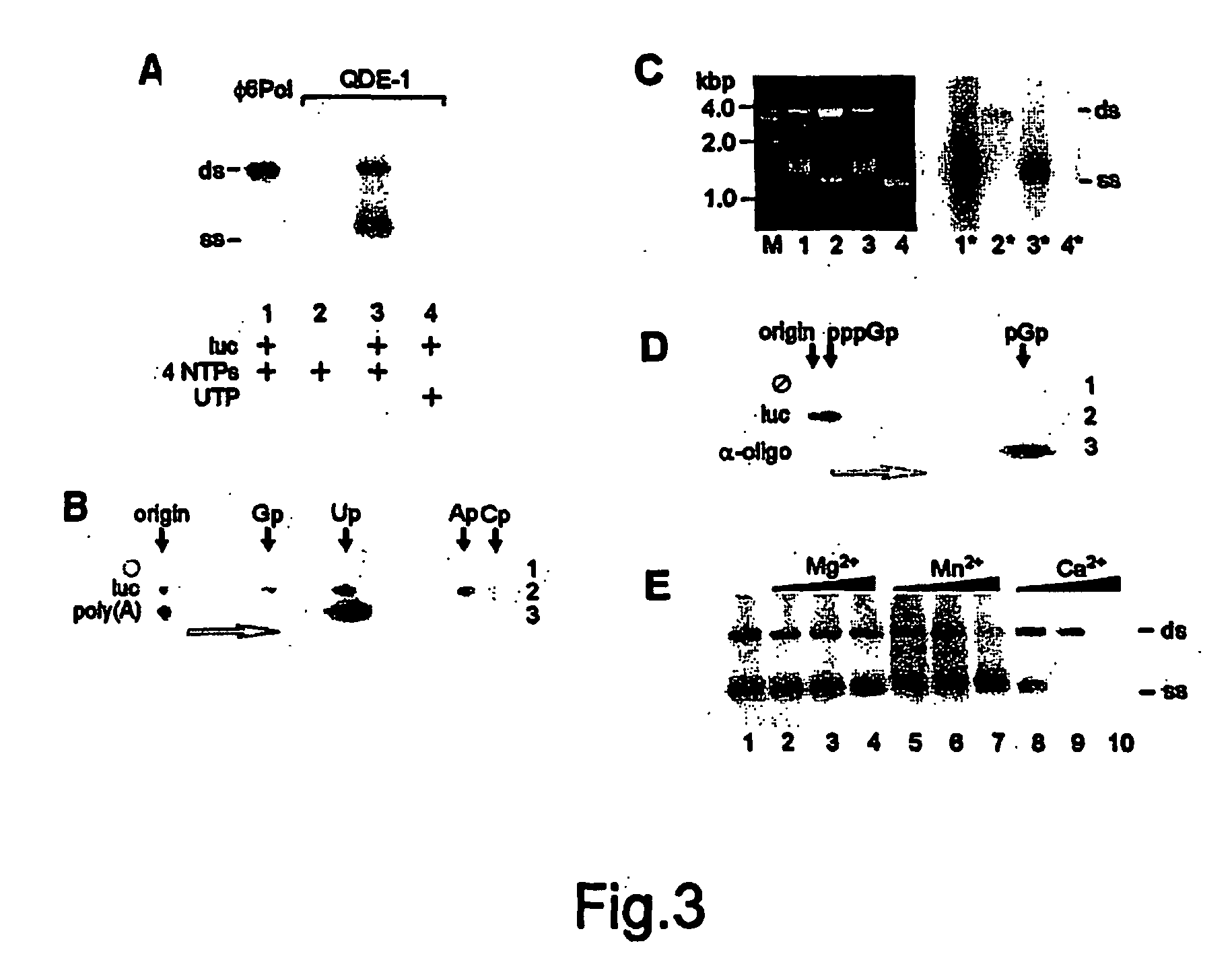Soluble rna polymerase protein and methods for the use thereof
a polymerase protein and soluble technology, applied in the field of enzymatic synthesis of rna using nucleic acid templates, can solve the problems of inability to realize the practical utility of rna silencing, inability to explain, and inability to understand the nature of abrnas, as well as the details of their transformation into double helix
- Summary
- Abstract
- Description
- Claims
- Application Information
AI Technical Summary
Problems solved by technology
Method used
Image
Examples
example 1
Expression and Purification of Recombinant Soluble QDE-1 and Its Genetic Derivatives
Sequence Analysis of Cellular RdRP-Like Proteins
[0195] Amino acid sequences of tomato RdRP and cellular RdRP-like proteins genetically shown to be involved in PTGS were aligned using the ClustalW algorithm (Thompson et al., 1994). The similarity plot built up on the alignment data demonstrates that the amino termini of these proteins are noticeably more divergent (<20% similarity), than the carboxyterminal parts (FIG. 1B). Within this conserved region, one particular span shows the highest similarity (“HS” in FIG. 1B; and FIG. 1C). If RdRP-like proteins indeed possess RNA-polymerizing activity, the elements crucial for this function are likely to reside within the C-terminal domain. In viral RdRPs, two conserved carboxylates located within motifs A and C catalyze the nucleotidyl transfer (Butcher et al., 2001; Hansen et al., 1997; Steitz, 1998). Based on the sequence context, the third aspartate f...
example 2
Characterization of RNA-Polymerization Activity of QDE-1 and Its Derivatives
RNA Templates
[0201] Synthetic ssRNA templte for RdRP assays were prepared by in vitro run-off transcription with T7 RNA polymerase in principle as described (Gurevich et al., 1991; Makeyev et al., 1996). References for the plasmids used for this purpose are given in figure legends. Plasmid pEM54 was derived from pTZluc(-stop) (Makeyev et al., 1996) by deleting the HindIII-EcoRV 5′-terminal fragment of the luciferase gene. Viral RNAs were extracted from purified virus particles (φ6, LA, and TMV) with phenol and chloroform, precipitated with ethanol and dissolved in water or 10 mM Tris-HCl, pH 8.0, 0.1 mM EDTA. RNA concentration was measured by optical density at 260 nm and the quality was determined by electrophoresis in standard or / and formaldehyde-containing agarose gels (Sambrook and Russell, 2001).
Purified QDE-1 is Enzymatically Active in vitro
[0202] The isolated QDE-1 was assayed for its possible R...
example 3
Downstream Applications of QDE-1 Polymerase and its Derivatives
Using sRNAs as Sequence-Specific Probes
[0217] If sRNA are distributed evenly along the entire template, they can be purified from their encoding templates and other components of RdRP mixtures and used as probes in molecular and cellular techniques that are based on nucleic acid hybridization. For this purpose, γ-32P labeled sRNAs synthesized on the luc RNA were used as probes for Northern blotting (FIG. 9A). Six RNAs were used as the hybridization targets: four sense fragments of luc RNA spanning different regions as shown in FIG. 9B, full-length antisense luc RNA (a-luc) and a control sR5 RNA originating from the φ6 s+ RNA and containing no homology to the luciferase gene.
[0218] To prepare the sRNA probe for Northern blotting, luciferase mRNA was incubated with QDE-1 in the presence of the four unlabeled NTP and [γ-32P]GTP as outlined above. RNA products were denatured and separated using gel-electrophoresis in a l...
PUM
| Property | Measurement | Unit |
|---|---|---|
| Fraction | aaaaa | aaaaa |
| Time | aaaaa | aaaaa |
| Interference | aaaaa | aaaaa |
Abstract
Description
Claims
Application Information
 Login to View More
Login to View More - R&D
- Intellectual Property
- Life Sciences
- Materials
- Tech Scout
- Unparalleled Data Quality
- Higher Quality Content
- 60% Fewer Hallucinations
Browse by: Latest US Patents, China's latest patents, Technical Efficacy Thesaurus, Application Domain, Technology Topic, Popular Technical Reports.
© 2025 PatSnap. All rights reserved.Legal|Privacy policy|Modern Slavery Act Transparency Statement|Sitemap|About US| Contact US: help@patsnap.com



